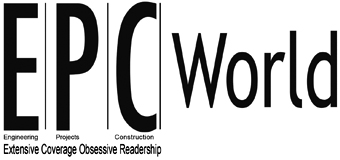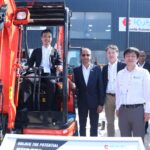Emerging technology trends in E-rickshaw batteries
by Shekhar Singal, Managing Director, Eastman Auto & Power
Imagine a future where our cities have clean, breathable air with AQI levels consistently in the green, hovering in small double digits. Much of such a scenario will depend on the widespread adoption of electric vehicles, especially for last mile mobility withE-rickshaws, as a means of urban transportation. The ecosystem surrounding E-rickshaws has become dynamic and is thriving with innovations in battery chemistries, faster charging, longer lifespans, enhanced safety features, and partnerships to make E-rickshaws better, all driving market growth.
The global E-rickshaw market is projected to grow from USD 3 billion in 2024 to nearly USD 50 billionby 2034, reflecting a double-digit CAGR of 32.02%.This growth is driving advancements in battery technology, particularly involving battery chemistry for better efficiency, performance, and safety of the E-rickshaw.These innovations are resulting in improved charging times and enhanced range, supported by better charging infrastructure.
Exciting trends in battery charging infrastructure are transforming the E-rickshaw market. There has been growth in the battery as a service (BAAS) model enabling E-rickshaw drivers to access battery rental plans, swap batteries several times during the day, thereby covering more distance and thus earning more.Many OEMs are partnering with financial institutions to reducethe upfront costs of owning an E-rickshawby removing the battery cost from the initial vehicle purchase price.Also, public charging infrastructure is on the rise with 2.7 million public charging points worldwide by theend of 2022, marking a 55% increase over 2021. Organised charging infrastructure and billing mechanisms are crucialfor the continued growth and penetrationof last mile e-mobility.
The Government of India has provided an enabling and strong environment for promoting battery swapping, realizing the Guidelines for Installation and Operation of Battery Swapping and Battery Charging Stations – 2024. The government is, of course, doing much more for the sector, and its support has been key to the sector’s growth. Under the Faster Adoption and Manufacturing of Hybrid and Electric Vehicles in India (FAME India)-II scheme,16.15 lakh electric vehicles have been incentivized with support based on battery capacity. For example, two-wheelers received Rs 15,000 per kWh, while three-wheelers received Rs 10,000 per kWh.Another recent policy initiative that came into effect onOctober 1, 2024 is the PM Electric Drive Revolution in Innovative Vehicle Enhancement (PM E-DRIVE)scheme, with a financial outlay of Rs. 10,900 crore. The aim of the scheme is to accelerate EVadoption, develop charging infrastructure, and strengthenthe EV manufacturing ecosystem across India.
Market leader innovations
Government policies, along with private sector initiatives, have further bolstered the sector, driving investments in innovations in the popular lead-acid batteries. E-rickshaws typically use lead-acid batteries, and to a lesser extent, lithium-ion batteries. The tried-and-tested lead-acid batteries are relatively inexpensive, easily available, and also compatible with standard chargers. Valve-regulated lead-acid (VRLA) batteries are the most common type used and are presently most ideal for urban transportation since they are known for being maintenance-free and delivering reliable performance across various conditions.
Innovations in lead-acid batteries, such as using conventional tall-tubular batteries for E-rickshaw application have delivered on the cost front; however, longevity has remained elusive. Further innovation in the form of integrating capacitor banks with E-rickshaw batteriesis on the horizon. According to studies, this combination can provide rapid bursts of power, improving performance under high-load conditions and reducing strain on the battery. The goal is to extend battery life and enhance efficiency, addressing common issues like limited lifespan and variable performance.
New chemistries
While lead-acid batteries dominate the market, lithium-ion batteries are also gaining acceptance due to their high energy density, lightweight design, and long cycle life. Among various lithium chemistries, lithium ferrous phosphate (LFP) is emerging as the preferred choice due to its advantages over other lithium-ion batteries. These batteries are safer, with a lower risk of overheating or fire; they have longer lifespans, offering more charge cycles; they are more eco-friendly, as they contain no toxic heavy metals; and they perform well in harsh conditions, withstanding high temperatures.
A promising alternative to lithium-ion technology is the emerging solid-state battery (SSB). With a higher specific energy density than conventional batteries, SSBs use a solid electrolyte instead of a liquid one, offering potential for greater energy storage, resulting in greater range and performance of E-rickshaws. However, mass commercial production is still a few years away, with expectations set for 2028.
Graphene-based batteries are another technology that is being explored for their potential to deliver superior performance, including higher conductivity and, very importantly, faster charging times. When integrated into conventional battery electrodes, graphene significantly improves efficiency. Graphene enhances conductivity without the need for large amounts of carbon, which can reduce battery life.
Innovation and trends in the E-rickshaw battery space extend beyond chemistry to advanced technologies like battery management systems (BMS). These systems are essential for optimizing battery performance and lifespan by monitoring battery health, managing charging cycles, and preventing issues like overcharging or overheating – all of which can be managed via an app. Also, safety features like two-layer protection, first through the BMS and then a circuit breaker,ensure a second line of defense against potential faults.
E-rickshaws are a relatively new mode of transportation, and newer trends will emerge for both the vehicle and its batteries. It’s exciting and green times ahead.





